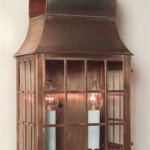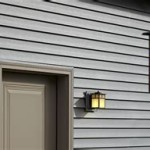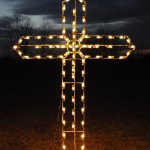DIY Hang Outdoor String Lights: A Guide to Creating a Warm and Welcoming Ambience
Outdoor string lights are an increasingly popular way to enhance the ambiance of any outdoor space, creating a warm and welcoming atmosphere for gatherings, entertaining, or simply relaxing under the stars. While pre-made string light options are widely available, creating your own DIY string light display offers numerous advantages, including the ability to customize length, design, and light style, while also potentially saving money.
This guide provides a comprehensive overview of DIY string light installation, outlining essential steps, materials, and considerations for successful execution. Whether you’re aiming for a simple and elegant display or a more elaborate and personalized design, this guide offers practical insights to make your outdoor lighting project a success.
Choosing the Right String Lights
The foundation of any successful DIY string light project lies in selecting the right type of lights. Careful consideration of various factors, including the desired ambiance, functionality, and durability, is crucial.
Types of String Lights:
- LED String Lights: Economical, energy-efficient, and available in various colors and styles, LED string lights are a popular choice for both ambiance and practicality. They are also known for their long lifespan and minimal heat output.
- Incandescent String Lights: Offering a classic warm glow, incandescent lights provide a traditional ambiance, although they tend to be less energy-efficient and have a shorter lifespan than LEDs.
- Solar-Powered String Lights: Requiring no external power source, solar-powered string lights are environmentally friendly and convenient for setups where access to electrical outlets is limited.
Additional Considerations:
- Voltage: Ensure that the voltage rating of the chosen string lights matches the available power supply.
- Bulb Spacing: Consider the desired distance between bulbs for optimal visual impact and light distribution.
- Weather Resistance: Opt for lights specifically designed for outdoor use, featuring water-resistant materials and construction.
- Cable Length: Determine the required cable length to span the desired area and ensure adequate coverage.
Preparation and Installation
Once the string lights are selected, the next step involves prepping the installation area and preparing the lights for hanging.
Preparing the Installation Area:
- Safety First: Always prioritize safety by de-energizing any electrical outlets or circuits that might be involved in the installation process.
- Clear Obstacles: Remove any clutter or obstructions from the installation area to ensure a smooth and safe installation process.
- Plan the Layout: Visualize the desired string light pattern and map out the route for the lights, considering the location of trees, structures, or other visual focal points within the outdoor space.
String Light Preparation:
- Test Functionality: Before installation, test the string lights to ensure that all bulbs are functional and that the electrical components are in working order.
- Measure and Cut Cable: If necessary, measure and cut the string light cable to achieve the desired length.
- Add Clips or Hooks: Depending on the chosen method of installation, attach clips or hooks to the string lights to facilitate hanging.
Creative Hanging Techniques
There are numerous creative ways to hang outdoor string lights, allowing for personalized expressions of style.
Common Hanging Techniques:
- Tree Branches: Utilize the natural beauty of trees by running string lights through branches, creating a whimsical and enchanting effect.
- Roof Eaves: Install string lights along the roofline, creating a warm and inviting atmosphere for outdoor living spaces.
- Pergola or Trellis: Add a touch of elegance by draping string lights across a pergola or trellis, enhancing the structural features while providing soft illumination.
- Fencing: Hang string lights along fence lines, creating a cozy and defined boundary for the outdoor area.
- Posts or Pillars: Use sturdy posts or pillars as anchor points for running string lights in various patterns, adding visual interest and vertical dimension.
Additional Tips:
- Consider Existing Structures: Incorporate existing structures, such as awnings, decks, or gazebos, to create a cohesive and integrated lighting design.
- Utilize Landscape Elements: Incorporate natural elements like flowering vines, shrubs, or rocks to add visual interest and create a more organic feel.
- Experiment with Patterns: Try different hanging techniques, such as crisscrossing, looping, or cascading, to create unique and aesthetically pleasing patterns.

28 Backyard Lighting Ideas How To Hang Outdoor String Lights

Diy Backyard String Lights Taryn Whiteaker Designs

Diy Patio Arbor Using String Lights The Honeycomb Home

Diy Outdoor String Light Poles

Diy Outdoor Patio String Lights National Hardware

How To Hang String Lights On Deck Remodelando La Casa

Diy Patio Arbor Using String Lights The Honeycomb Home

28 Backyard Lighting Ideas How To Hang Outdoor String Lights

5 Tips On How To Hang Outdoor String Lights

Diy Outdoor Hanging String Lights Monsterscircus
Related Posts







